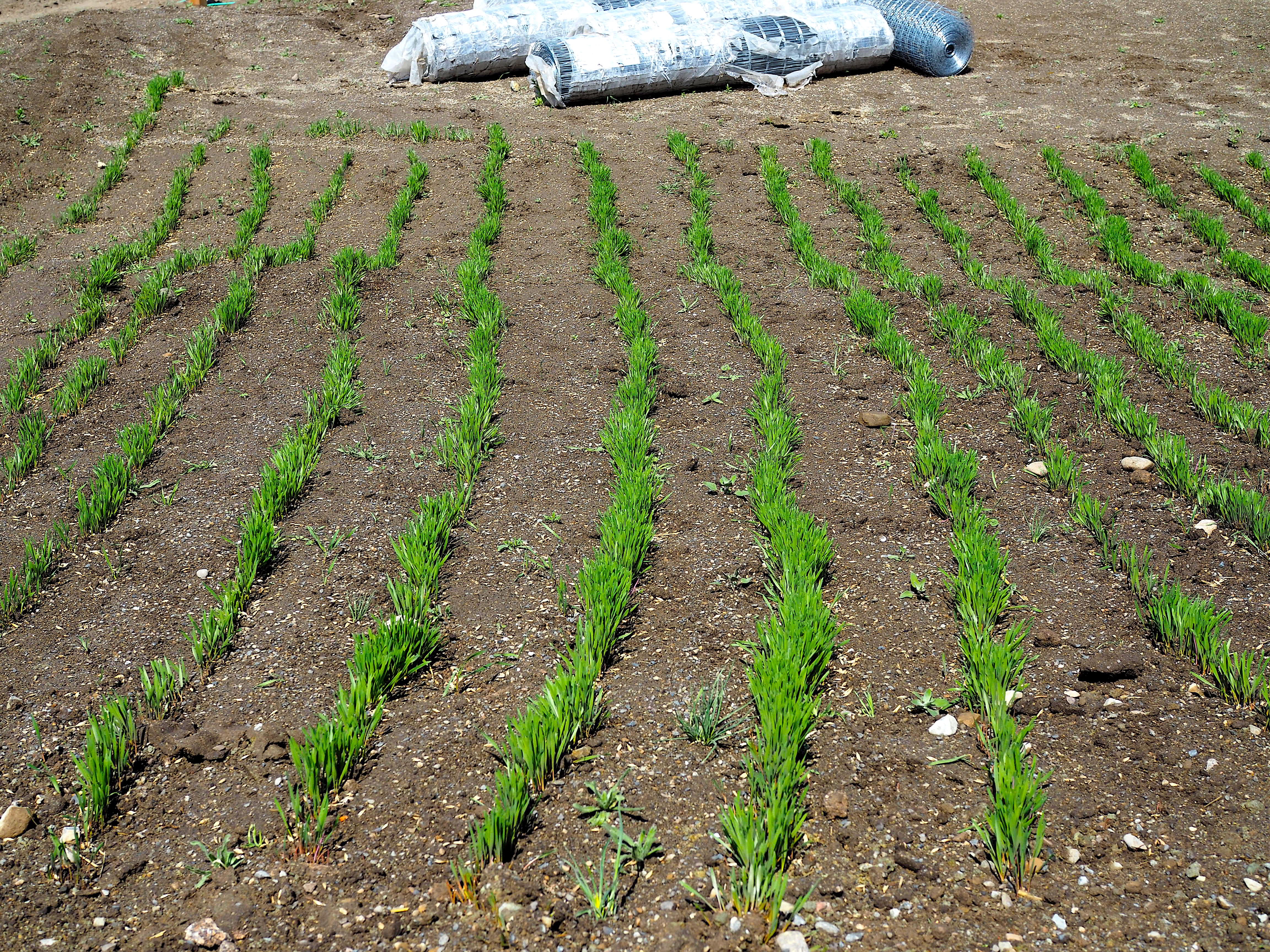Home On The Range #021: Einkorn Wheat – An Ancient Cultivation
RusDs 05.21.21
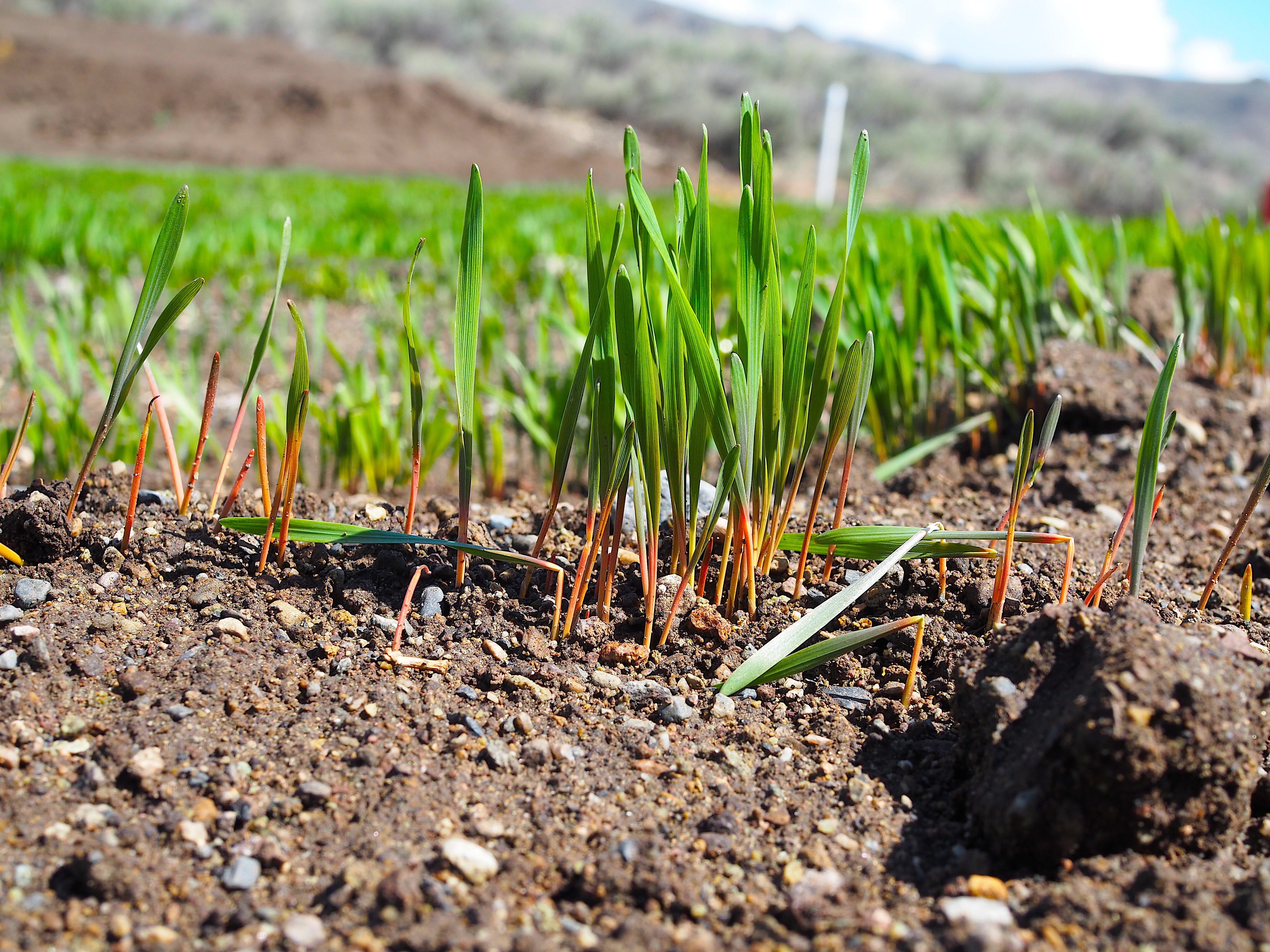
Welcome to our reoccurring series of “Home on the Range.” Here, we would like to share all of our experiences for those who may be homesteading, living off the land, hunting, farming, ranching, and truly investing in nature and the great outdoors. The ability to provide for yourself and your family can be tremendously rewarding and simultaneously difficult at times. So, in “Home on the Range” we want to share our different exploits so you can learn and hopefully we can receive your feedback along the way as well.
Amber Waves of Grain: Why Einkorn?
As part of rehabilitating and reconfiguring an unused, scrubby hilltop area of my farm for a barn and improved truck turnaround for a haying operation, I had quite a bit of area opened up for a chicken coop/yard, as well as a resultant barren hillside. The majority of the hillside, I re-seeded with various native plants and grasses. However, I had the area around the chicken yard left to seed, and elected to plant a stand of wheat, both to provide a shade/wind break for the chickens, and to provide us with flour. But what wheat to start with?
The soil would need conditioning via a hardy, low maintenance variety to begin with. Einkorn is a hardy, tolerant, stone-age plant that requires little maintenance, very little irrigation, and can deal with compacted soils that are otherwise not ideal for cultivation. In turn, after cultivating einkorn, the root growth and recession will have naturally improved and created the soil, as well as have fostered it own microbiomes for any future plants. That is the main reason I chose einkorn wheat, and planting and harvesting einkorn first will likely result in better soil conditions for plating a “winter” red wheat afterwards. It can survive in cold, arid conditions which my area certainly has in spades.
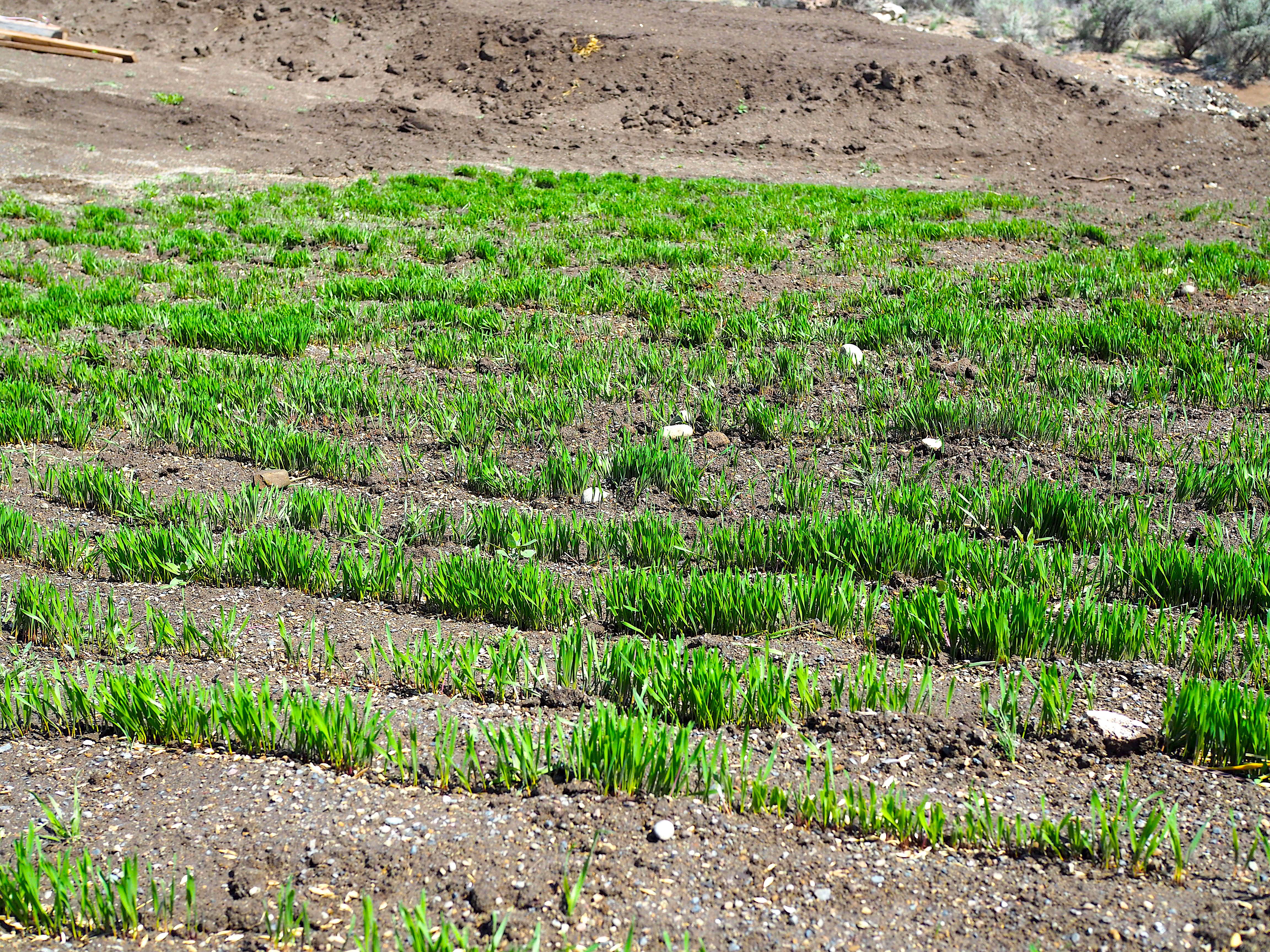
Einkorn is, along with emmer, one of the oldest cultivated grains in the world, dating back roughly 10,000 years. Triticum boeoticum was the original wild form, with seed heads that would naturally fall apart and disperse upon falling to the ground, whereas Triticum monococcum is the cultivated variety where the seed heads stay intact and have to be manually separated. Scientists surmise the cultivation process only took up to a few centuries. Interestingly enough, einkorn has only 14 chromosomes, as opposed to modern wheat varieties with roughly 42. It is a “hulled” wheat, and needs to be de-hulled prior to milling.
Planting Einkorn Wheat
Due to a somewhat early spring thaw and melt off, I wanted to see exactly how tolerant and easy to germinate einkorn was, so I conducted an experiment. I deep-scratched a large area with my bow rake, like I did for planting the native grasses on the other part of the hillside, broadcast the wheat seeds, and then lightly covered the seeds with soil by gently brushing them over with the flat side of the bow rake. We had bands of rain coming through about every other day, and I just let them be naturally irrigated by whatever fell from the sky. This method yielded about a 25% germination success rate by my highly unscientific eyeball assessment of the test patch.
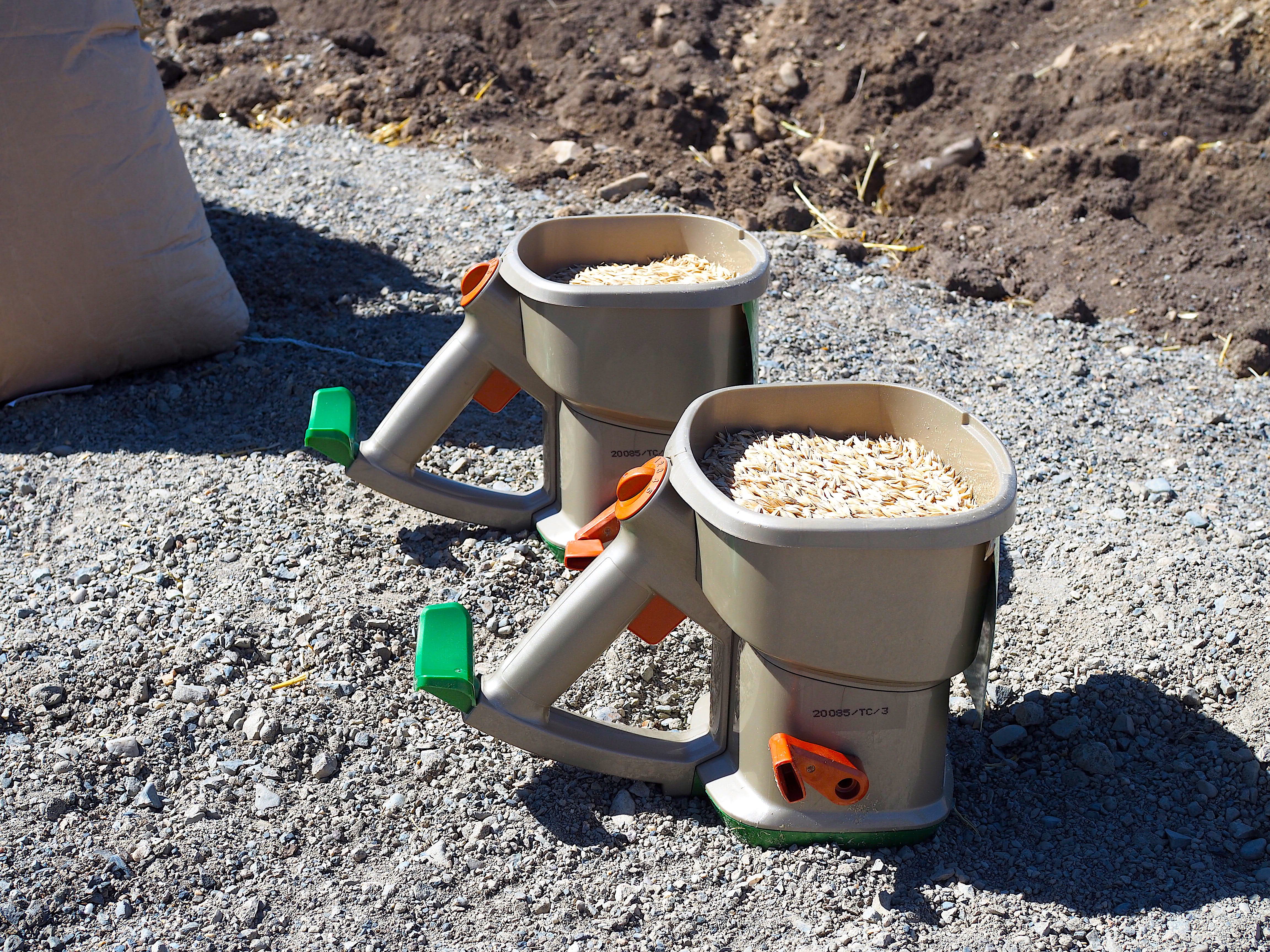
I then used the tried and true method of hoeing furrows, sprinkling in the wheat seeds, and lightly covering them up, again using the flat side of my bow rake to cover the furrows. As luck would have it, the day I did this we had a lengthy “thunder sleet” storm to water the seeds in nicely right as I was finishing up. The einkorn wheat seeds much preferred this method, as in about a week, I looked to have closer to a 80-90% germination success rate and had nice rows of wheat pushing up all over the area which I had cultivated. So far, the wheat seems to be doing just fine in the once-barren soil, without any application of fertilizer. As einkorn is one of the lower yielding wheats, ag schools recommend the application and use of pelletized chicken manure to massively improve yields.
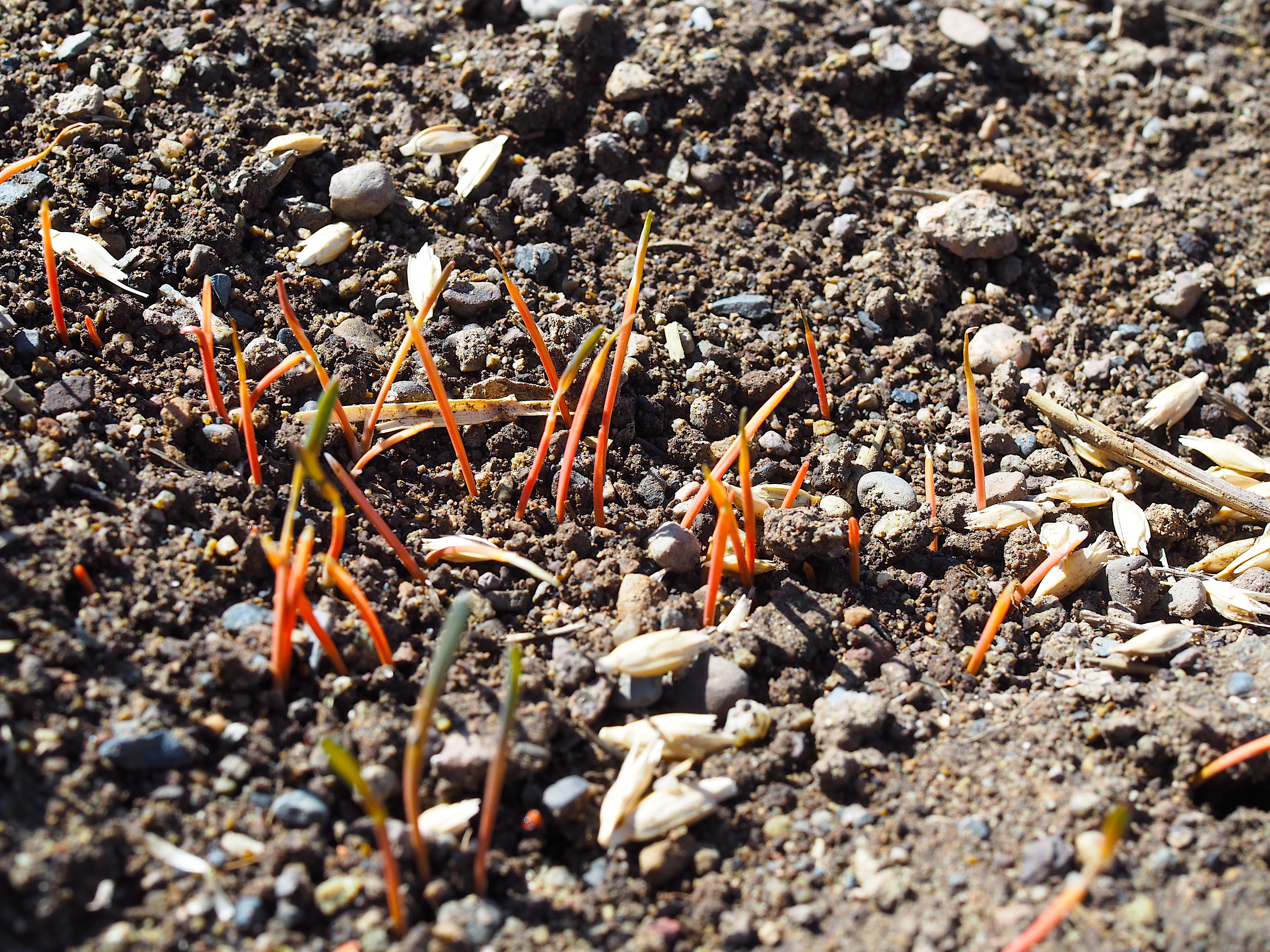
Processing Einkorn Wheat
Einkorn is ready for harvest when the wheat berries harden up. One can do the tedious, time consuming task of snapping the heads off by hand. Personally, I plan on using a scythe. Machines are not an option due to the terrain in this particular area of my farm. Once the wheat is harvested, one has to thresh, dehull, and winnow the wheat. Being that this is a smaller stand, I will likely do this by hand using a few deep buckets, beating the wheat against the side of the bucket to separate the wheat berries from the stalks.
Next comes the dehulling process. This is the additional step that hulled wheats like buckwheat or einkorn require. To remove the hull from einkorn, a large rolling pin can be run over the hulls. Covering the hulls is recommended in this step, to keep them all the wheat berries in place. After that, one can winnow the dehulled wheat. It’s plenty windy where I am, so I’ll do this by dropping the de-hulled wheat into a clean bucket, letting the wind blow away the hulls.
I then can mill as much into flour as I’d like to have on hand, storing the rest as intact berries, and milling when I need some more. There’s a plethora of grain mills out there for home or small scale use, but the most convenient one for me is the Kitchen Aid Grain Mill attachment, being I already have a Kitchen Aid. Einkorn is not the best flour for things that need to rise and be fluffy, but makes great flatbreads, crackers, and so on.
